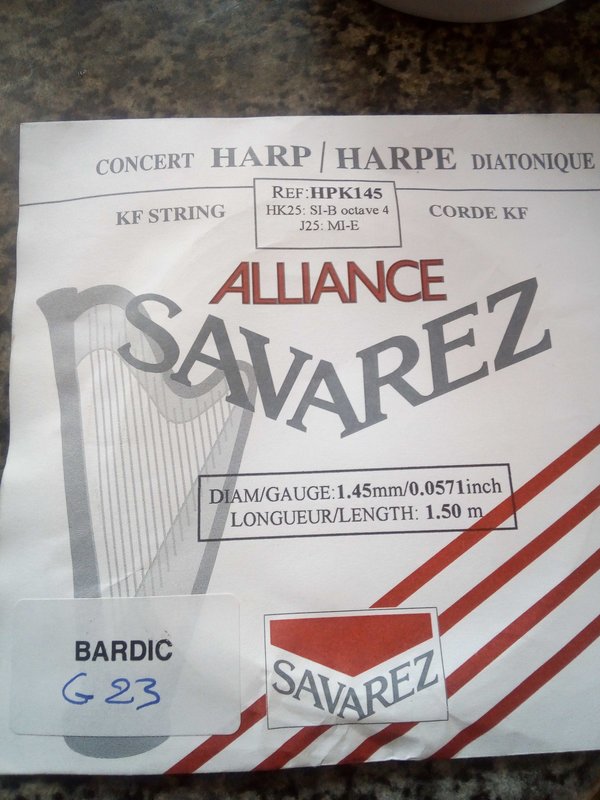|
The re-stringing I've done so far as been fairly straight forward and now it's on to the experimental side. The strings I've used on the upper part of the harp are all NYLON [shock horror] and sound amazing! I'm really pleased with how they feel and sound. They are all the nylons used on the CAMAC Bardic 27 string harp, which is my other lever harp. I have always loved the feel and sound of the Bardic, so when I decided to change the strings on this harp it suddenly occurred to me that I had a spare set of strings for the Bardic so why not put those on instead? From 4th octave D upwards the nylon strings sound brilliant, but the 4th octave C, B & A sound a bit dead and 'thumpy'. Going towards the bass end the bardic uses carbon fibre but at a different gauge to normal (here comes the interesting bit). Instead of it being lever harp gauge, it's concert harp gauge but used 3 strings higher on the lever higher. As you can see by this photo, the 4th octave G on the bardic is actually a [concert harp] 4th octave B So I tried to source the correct gauge string from a harp shop, which was impossible! So I ended up going to a German luthier string supplier that sold all types of strings for different instruments from the Alliance range. They had a harp section online but instead of the strings being listed by octave they are only listed by string gauge. Luckily they do lots of REDs and BLACKs in various gauges so you can experiment with the gauges. Taking an educated guess, I reckoned that the HPK136R was going to be the one I needed.
The important thing for me was to have no jump in sound from the nylon string on the 4th octave D above to the carbon fibre 4th octave C. Which I'm delighted to say that now it's starting to settle in there isn't!!! PHEW!!!
0 Comments
Leave a Reply. |
Categories
All
AuthorLauren Scott is a harpist & composer and has been blogging on Harpyness for over 10 years. If you enjoy reading Harpyness and you'd like to buy me a virtual coffee that would be very welcome. Cheers!
Archives
June 2024
|




